

If you have seen any armored horses, in rock art anywhere, we would appreciate hearing from you.
mavis@GreerServices.com or jgreer@GreerServices.com
The following are known armored horses in Northern Plains rock art.
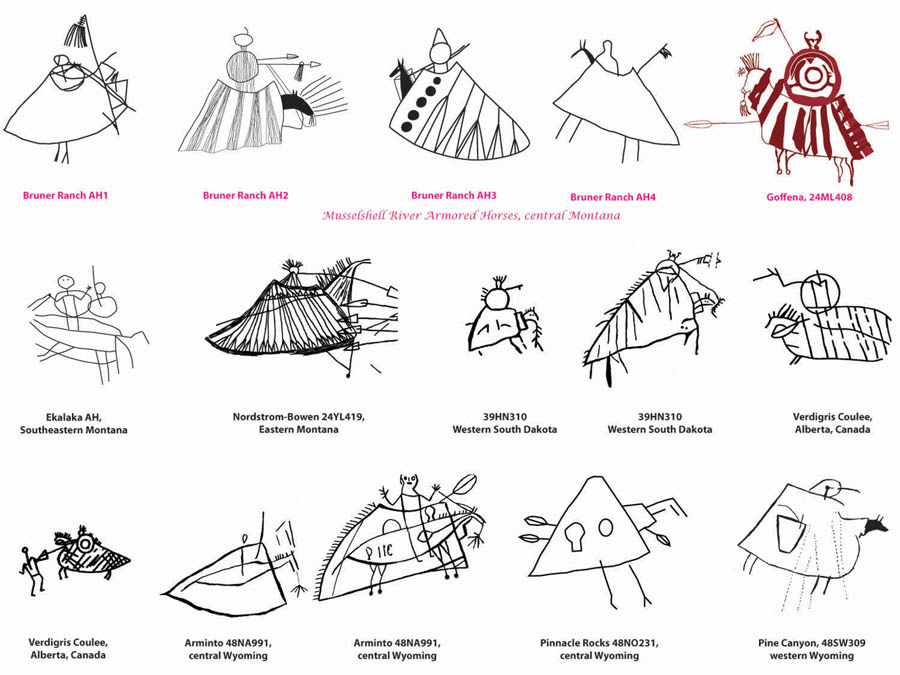
Armored Horses
Horses arrived on the Northern Plains of North America about A.D. 1700, and along with the horse came armor. Horse armor does not appear to have been limited to any particular culture, and it appears to have been an integral part of horse use from the time horses were obtained by a tribe. Although armor and other accessories are generally assumed to have been based on Spanish design, personal armor was common on the Northern Plains prior to arrival of the horse, and horse protection may have been an outgrowth of that practice and may be a logical progression from the large personal body-covering shields of the pre-horse Northwestern Plains to the larger horse and rider body-covering armor of the post-horse era. However, because the styles of horse armor are so similar everywhere in North America, the Spanish design influence cannot be overlooked.
|
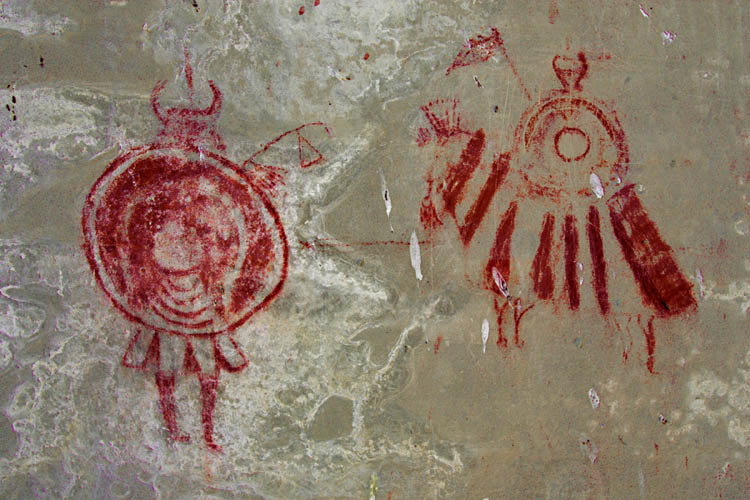 |
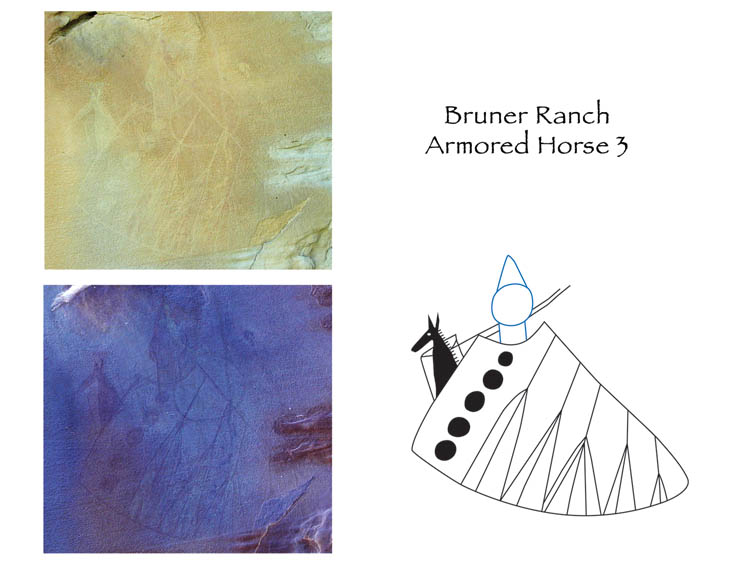
Armored Horse in Central Montana.
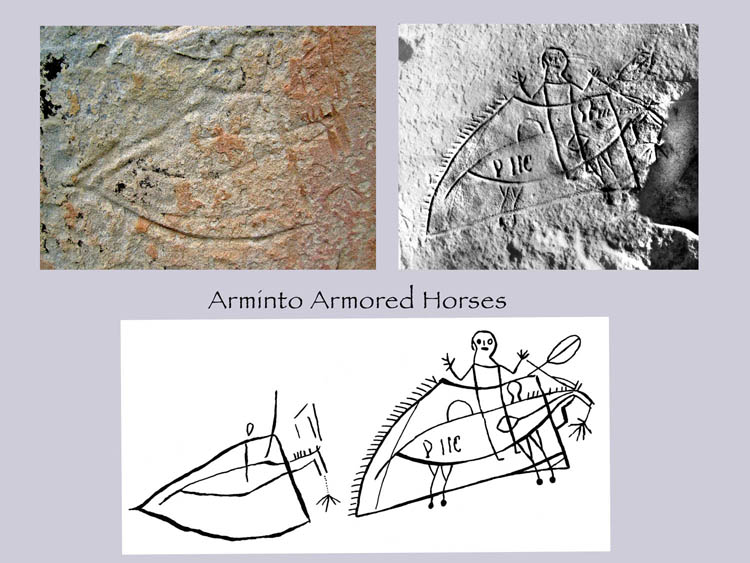
|
Armor Construction
Horse armor was reported by Lewis and Clark in 1805. They saw a Shoshone man riding a horse covered with armor as they passed through the mountains near the present-day border of southwestern Montana and Idaho. The armor was described to be a coat formed by many folded dressed antelope skins held together with a mixture of glue and sand. They noted that the armor was used to cover the person’s body and that of their horse because it was impervious to arrows.
Armor was painted and perhaps decorated with fringe, feathers, pelts, and animal horns, although in rock art what is perceived to be decoration in some cases may be indicative of layering in armor manufacture. The lines down the back of the Arminto armored horse is a good example of decoration with either fringe or meanacing horns.
|
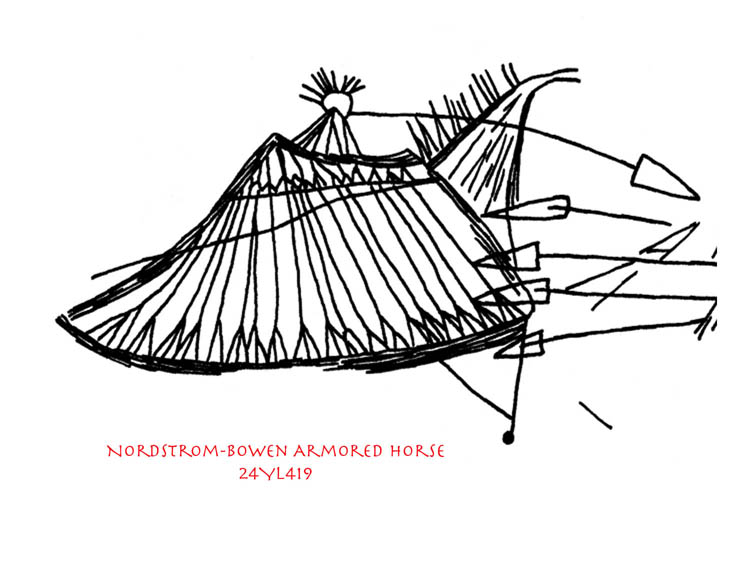
Armored horse in southeastern Montana. The radiating lines that originate at the rider and fan out toward the bottom may represent decoration, such as feathers, or portray a layered manufacturing technique (as noted by Lewis and Clark).
Armor Function
Horse armor is traditionally viewed as being employed for use in warfare, and associated shields and weapons have been used to support this function. Of the fifteen armored horses on the Northern Plains, ten (or two-thirds) have riders with personal shields, and the rider of the Nordstrom-Bowen horse is covered with personal body armor similar to his horse’s armor. Nine of the fifteen riders have associated weapons. Five armored horse riders are shown actively engaged in conflict with pedestrians, presumably in battle. Thus, there are several indicators suggest armored horses engaged in battle. However, it is also possible that weapons in non-combat scenes may be portraying the practice of not going out without personal protection, and the horse armor may have been for environmental purposes, such as keeping the horse and rider warm.
|
 |
Papers presented and published on armored horses:
Greer, Mavis, and John Greer
2009 Armored Horses Along the Musselshell River: Evidence of Early Contact in Montana. Paper presented at the Annual Meeting of the Montana Archaeological Society, Kalispell.
|
Keyser, J., Mavis Greer, and John Greer
2005 Arminto Petroglyphs: Rock Art Damage Assessment and Management Considerations in Central Wyoming. Plains Anthropologist 50(193):23-30.
|

![]()





